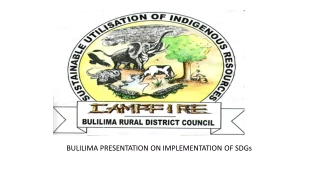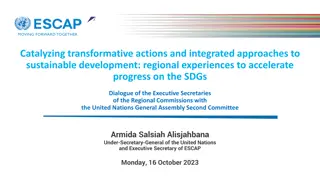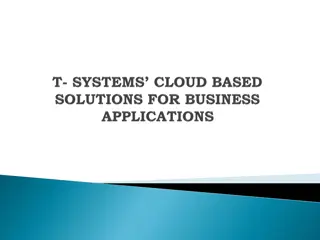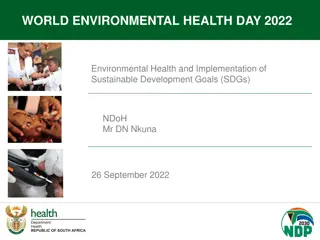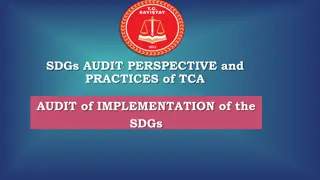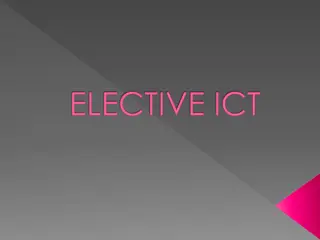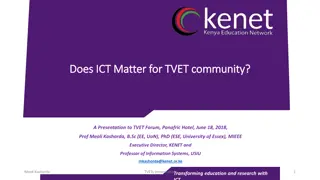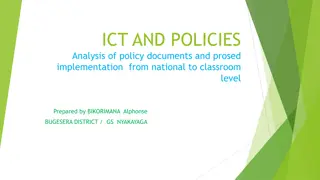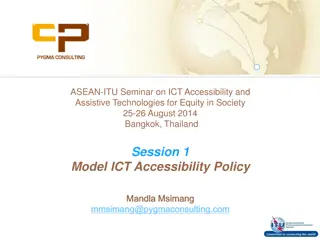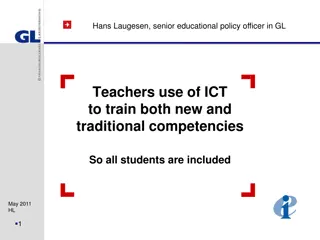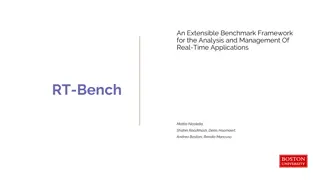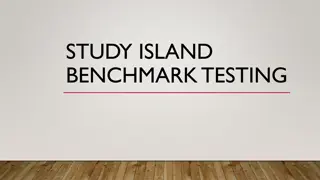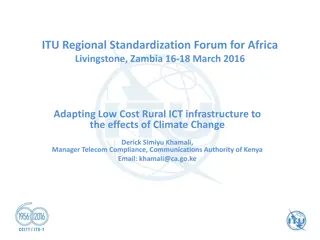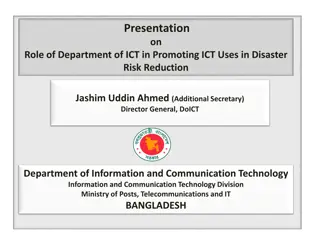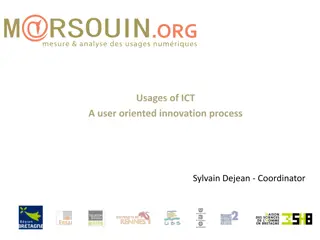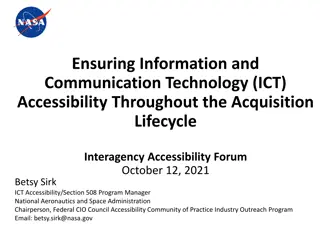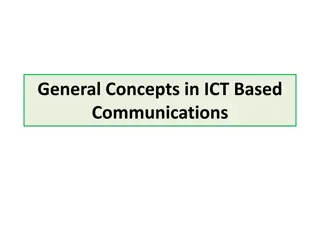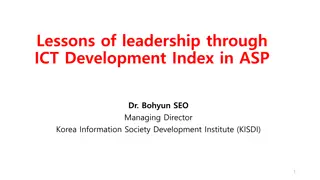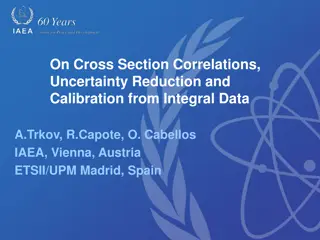Accelerating SDGs Through ICT: Huawei's 2018 Benchmark Report
Explore the correlations between Sustainable Development Goals (SDGs) and Information and Communication Technology (ICT) in Huawei's 2018 benchmark report. The report highlights key strategies in SDG4 related to basic skills, gender equality, literacy, and access to ICT resources. Additionally, it discusses the regional context of ICT development, changes in enrollment ratios in Asia-Pacific, and a regional strategy for utilizing ICT to achieve SDG4.
Download Presentation

Please find below an Image/Link to download the presentation.
The content on the website is provided AS IS for your information and personal use only. It may not be sold, licensed, or shared on other websites without obtaining consent from the author.If you encounter any issues during the download, it is possible that the publisher has removed the file from their server.
You are allowed to download the files provided on this website for personal or commercial use, subject to the condition that they are used lawfully. All files are the property of their respective owners.
The content on the website is provided AS IS for your information and personal use only. It may not be sold, licensed, or shared on other websites without obtaining consent from the author.
E N D
Presentation Transcript
Correlations between SDGs and ICT Huawei. (2018). Accelerating SDGs through ICT: The 2018 Huawei ICT SDG Benchmark
ICT in SDG4 Targets Key Indicative Strategies 4.4 Skills Basic and ICT skills ICT training, access to appropriate technology and infrastructure 4.5 Gender Promote the use of ICT, particularly mobile technology 4.6 Literacy 4.a Facility Access to ICT resources Teachers with adequate technological skills to manage ICT 4.C Teachers SDG4.4.1 proportion of youth and adults with ICT skills SDG4.a.1 proportion of schools with access to the Internet and computers for pedagogical use.
Regional Context: ICT Development Source: Measuring Information Society Report 2017, ITU.
Changes in Enrolment Ratio in AP Source: Global Education Monitoring Report (UNESCO, 2015) 4
AP Regional Strategy for Using ICT to Achieve SDG4 (2017) 1. Develop ICT in Education policies as integral part of national education sector plans 2. Engage sub-regional and international organizations to promote research and sharing 3. Secondary Education, TVET and Higher Education: Allocate resources to maximize the full potential of ICT for formal, non-formal and informal sectors 4. Quality of Teaching: Develop competency standards for teachers towards ICT-integrated transformative pedagogies 5. Inclusion & Equity: Take concrete measures to tackle the learning divide, e.g. assistive technology, mobile technology, OERs, open and distance learning. 6. Monitoring & Evaluation: In coordination with the SDG4-National Coordinators, closely monitor progress of using ICT in Four Priority Areas Available at: https://goo.gl/k9x1Qp 5
Thank You. ICT in Education (ict.bgk@unesco.org) UNESCO Asia Pacific Regional Bureau for Education (http://bangkok.unesco.org/theme/ict-education)


